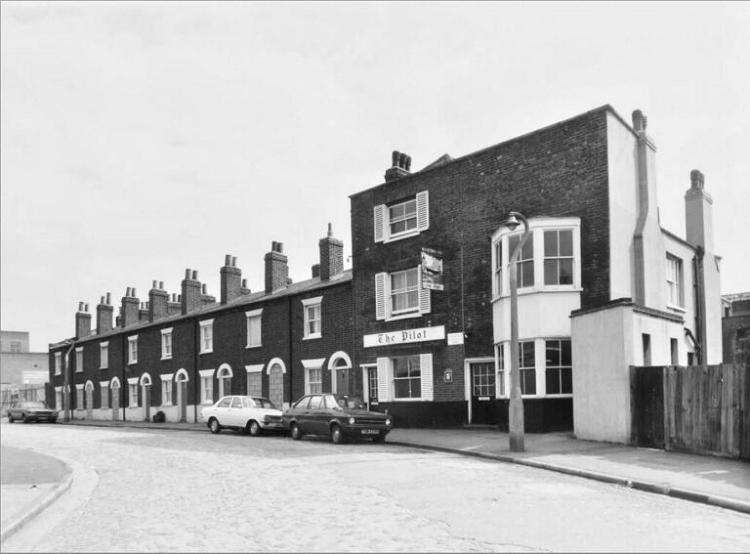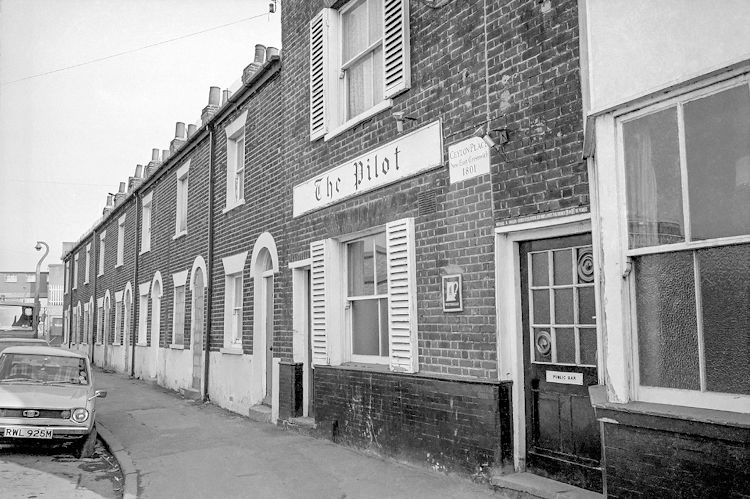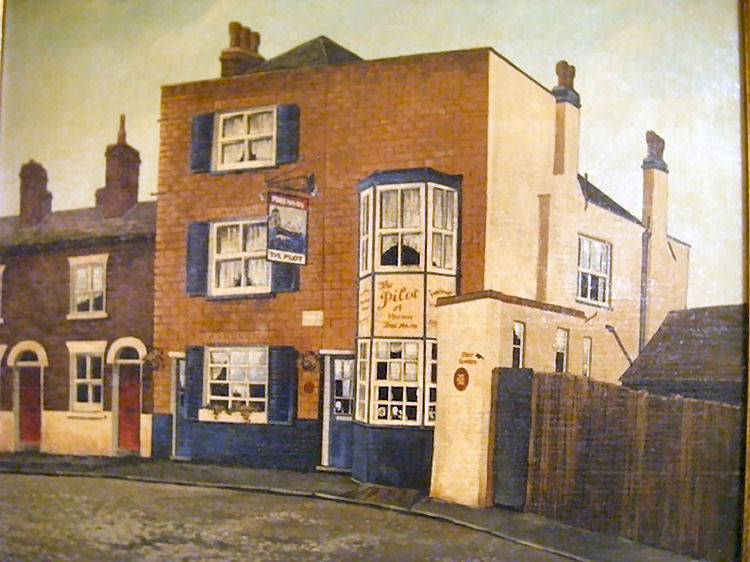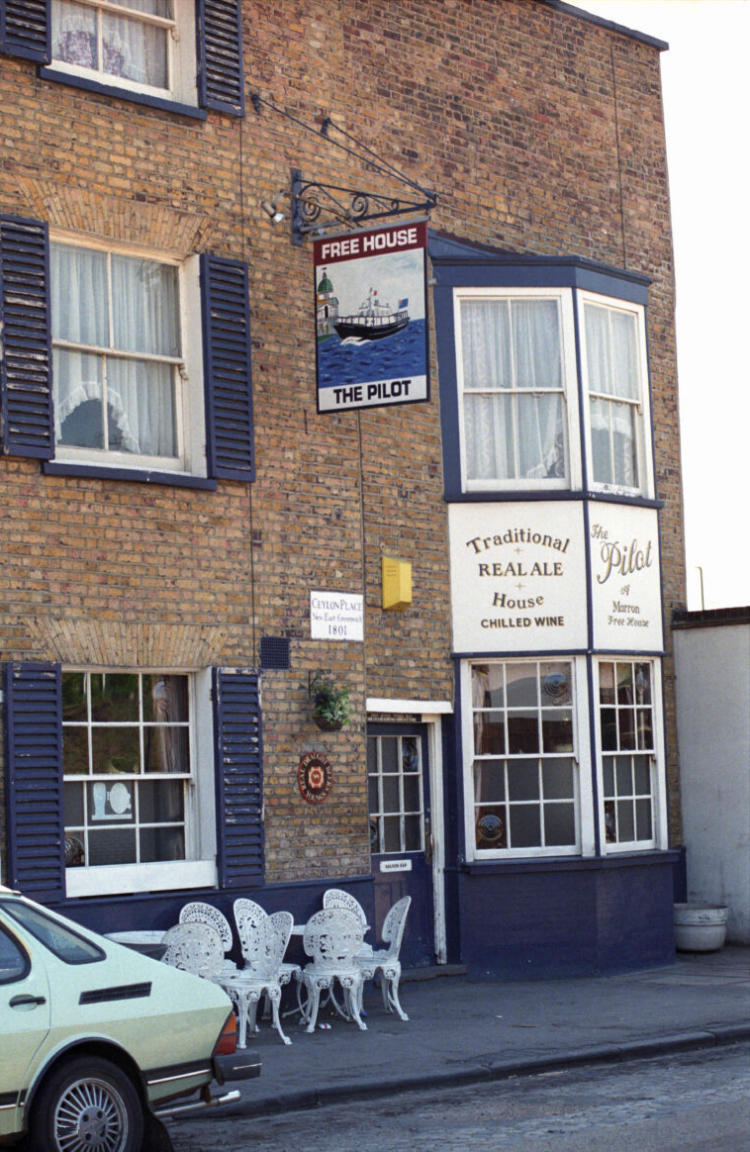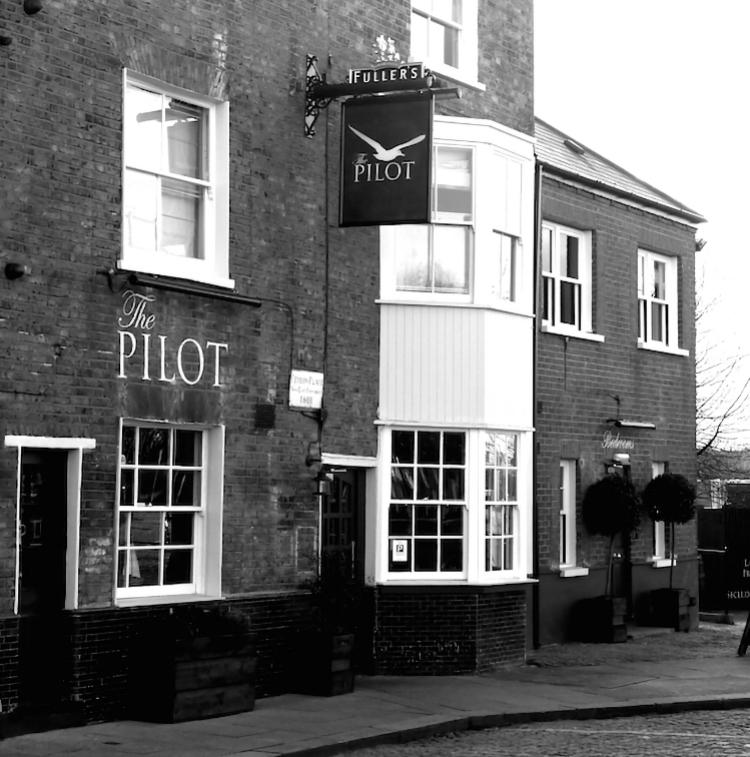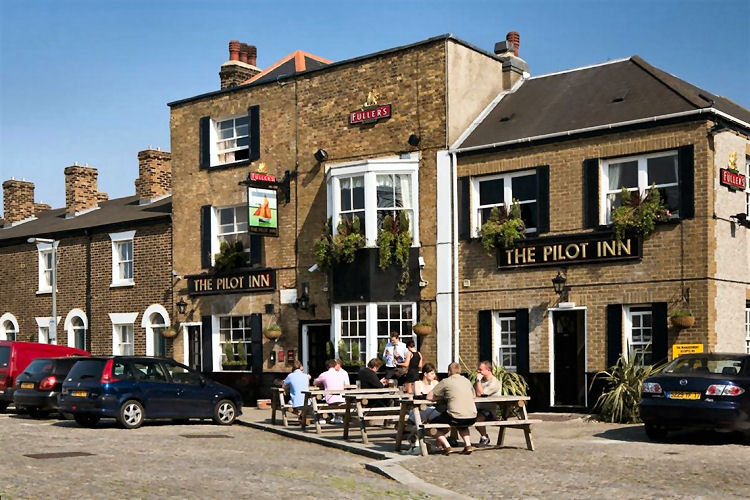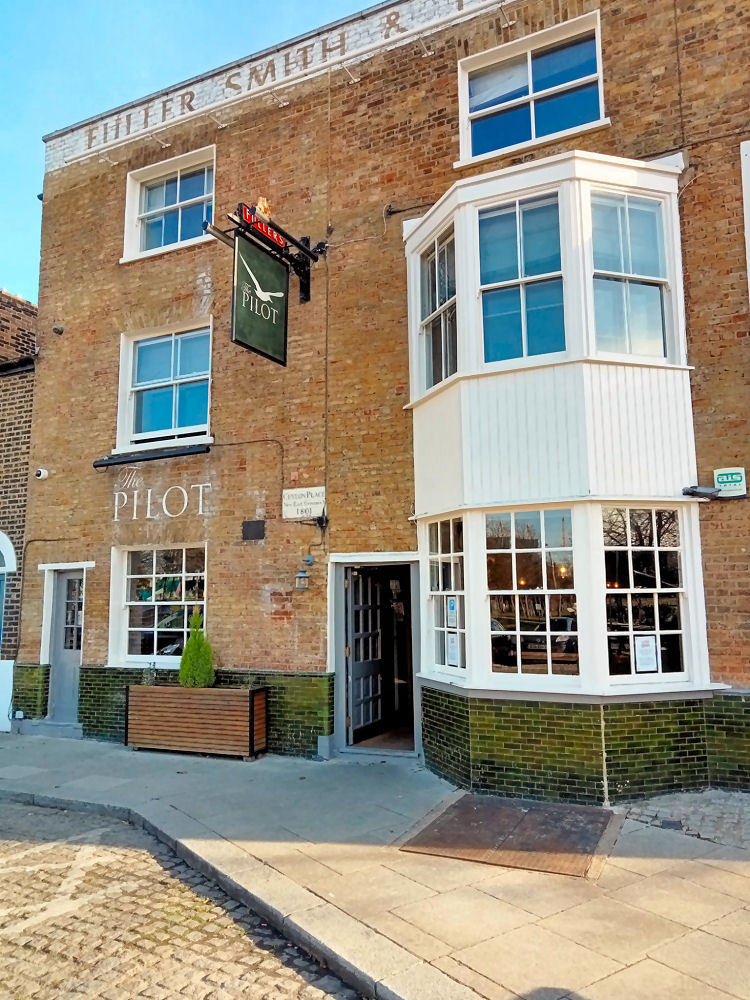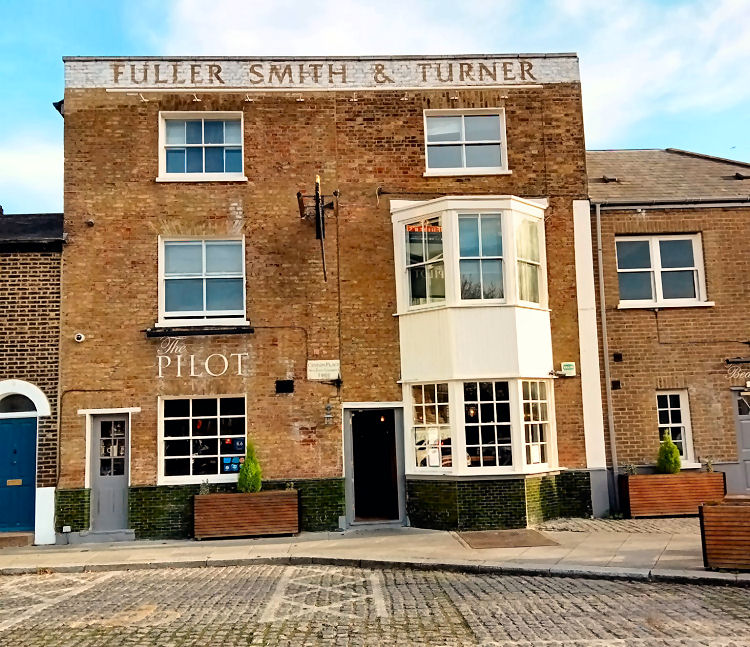|
From the
https://londonist.com By Jessica Andrews 2013.
Traipsing along the sparse riverside walk that lines North Greenwich, it is difficult to
imagine London in her maritime glory. The most northern tip of the
Greenwich Peninsula was once a final resting place for the rotting
corpses of pirates, hanged like tattered crows swaying in the wind as a
deterrent to other would-be vagrants of the sea. The vast warehouses and
skeletal construction cranes standing against the sky today merely hint
at the rich industrial past of the Thames.
Drawn from isolation by the opening of the Blackwall Tunnel in 1897, and
the grey pull of North Greenwich underground station in 1999, what was
once the haunt of smugglers and vagabonds is now frequented by
breathless joggers and weary commuters, or pleasure-seekers meandering
towards the bulging O2 arena.
In an area now defined by that futuristic dome, The Pilot Inn and her
adjacent cottages are one of the last few reminders of the true
seafaring days of The Thames. The pub first opened in 1801 under the
name ‘The Pilot Inn and Ferry’ — the only way to reach central London
and any other public houses was by boat. The adjoining cottages were
originally built to house manual labourers in the area, and today back
onto a deliciously dark alleyway that leads directly to the pub.
The glitter of London gets trapped in the unlikeliest of places, and The
Pilot — ran by Fuller's — is not without a touch of glamour. In the very
early 1990s, before he catapulted to infamy, a young Damien Hirst rented
a cottage on the street, perhaps finding solace in the rubble of broken
Britain, his own nautical oasis of calm before the storm. The video for
Blur’s ‘Parklife’ was also filmed on the lone street on which The Pilot
and her modest neighbours stand. It seems that here we can read a true
portrait of London’s rise to glory: from a time of industry through to
the desolate closure of the shipyards and gasworks, to the dazzling days
of Britpop and the emerging British art scene, through to the subsequent
rise and fall of the millennium dome and now the cable car wheeling its
way merrily through the sky, a potent reminder of the London 2012 Games
and their legacy.
Today, the pub rightly flaunts her maritime connection. From the exposed
beams of her interior, to the old ship’s wheel and the drawings of
vessels framed on the walls, The Pilot has the feel of a traditional
coastal English tavern. The most popular dish on the classic bar menu
is, of course, fish and chips. The fish is sourced from Direct Seafoods,
which operates a local skipper’s scheme, which is reassuring for those
concerned about the origins of their supper. The Pilot also offers a
Sunday roast, and has a well-stocked cheese and wine fridge that gleams
by the side of the bar, to while away those dark winter afternoons. A
good variety of real ales are served, with seasonal choices adding
variety to what’s on offer.
The quintessential Englishman Samuel Pepys once declared that the pub is
the heart of England. The fact that The Pilot is probably the oldest
surviving building on the Greenwich Peninsula says a lot for the role of
drinking houses within our society. Pubs are often the foundation stones
of a community, meeting places for friends, enemies and lovers and
places where all manner of transactions are carried out. Pubs are living
historical documents; from the worn sag at the top of the stairs to the
stories carried out in whisky whispers in dark corners. They accommodate
people from all walks of life, from pirates to commuters, and we ought
to do everything we can to keep the great British pub alive.
|
